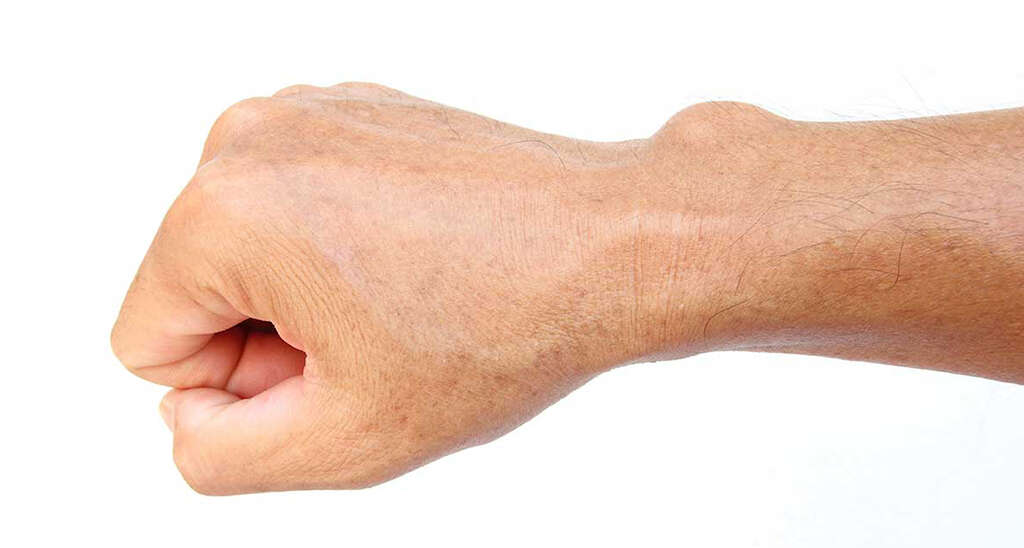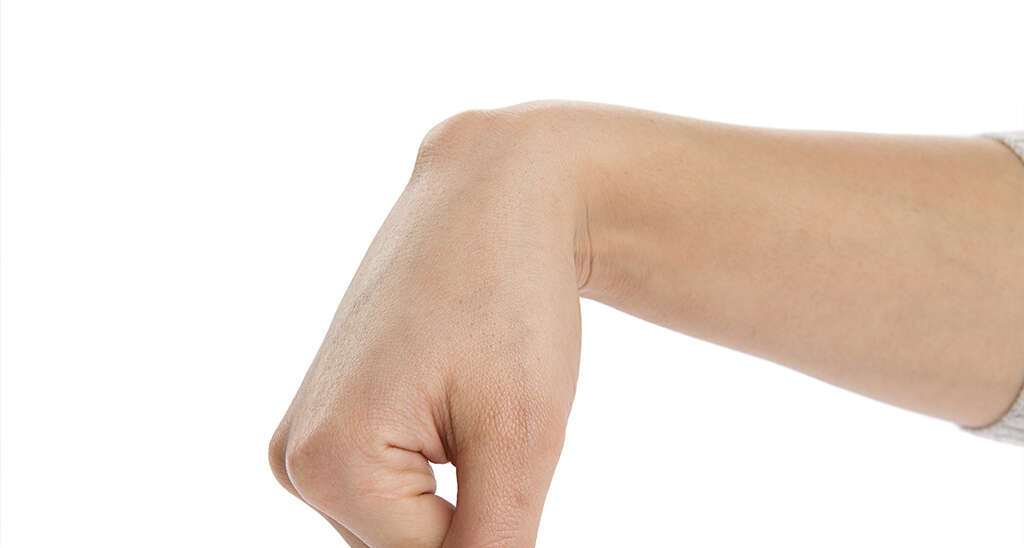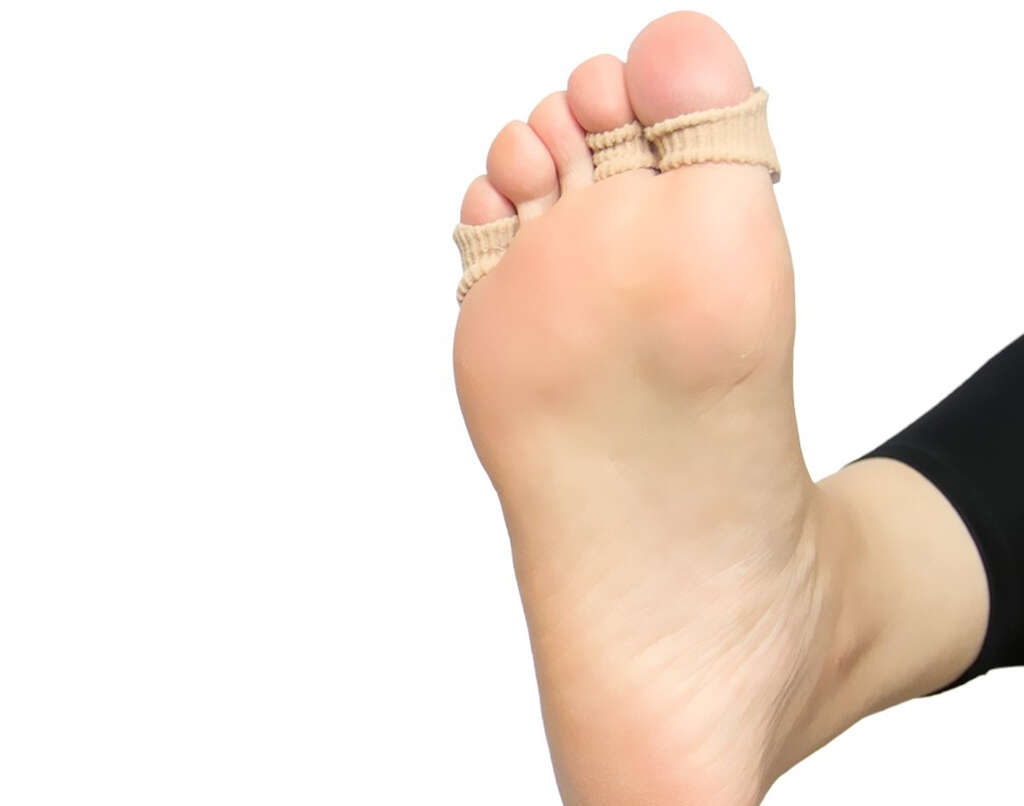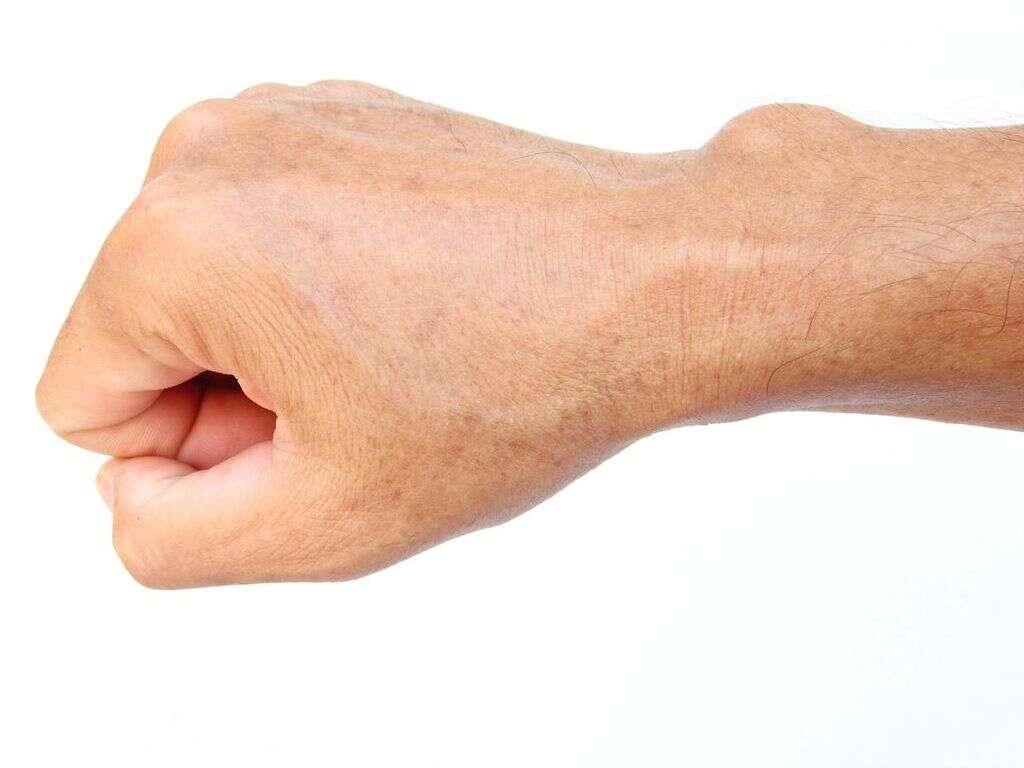10 Ganglion Cyst Symptoms
A ganglion cyst refers to a lump that is filled with fluid and associated with a tendon sheath or joint. It usually develops over several months. The cause of a ganglion cyst is unknown, but experts believe that it is due to the outpouching of the synovial membrane. One risk factor of a ganglion cyst is gymnastics.
The diagnosis can be confirmed through patient history, physical examination, and possible medical imaging to rule out other causes. Ganglion cysts that are generally asymptomatic do not require any treatment besides watchful waiting. Other treatment or management options involve splinting, aspiration, or surgery. About 50 percent of ganglion cysts resolve on their own.
It has been estimated that about 3 per 10,000 individuals develop a ganglion cyst annually. It most commonly occurs among young or middle-aged females.
Symptom #1: Pain
Pain is a distressing feeling that is caused by damaging and intense stimuli. It can be described as an unpleasant experience that is both sensory and emotionally associated with potential tissue damage. Pain causes the individual to withdraw from the stimuli to protect themselves, allowing the body to heal and avoid similar experiences in the future. Pain usually resolves once the harmful stimuli has been removed.
Although most patients do not experience any pain in a ganglion cyst, pain can occur when the cyst has grown larger and starts compressing the surrounding areas along with the nerves. Ganglion cysts that cause pain or affect the nerve should be removed through aspiration or surgery.
Symptom #2: Lump
A ganglion cyst usually occurs around the wrist or hand. It is most commonly seen on the dorsum of the wrist and fingers. It may also occur in the foot or near the knee.
Since it is a fluid-filled capsule, the swelling or lump may fluctuate in size. The lump is due to the outpouching of the synovial fluid, which is gelatinous and feels like jelly. A new lump should be checked by the doctor to ensure that it is a simple ganglion cyst. The cyst should be transilluminate, compressible, movable, and not adhere to the skin.

Symptom #3: Paresthesia
Paresthesia refers to the uncomfortable sensation described as a prickling, tingling, numbness, or burning sensation on the skin, despite no apparent physical cause. Paresthesia can be chronic or transient and can be caused by various causes.
Paresthesia can occur on any part of the body but most commonly involves the extremities. The commonest paresthesia is often described as “pins and needles” or when a limb is thought to have “fallen asleep.” In a ganglion cyst, paresthesia occurs if the cyst compresses a nerve.
Symptom #4: Muscle Weakness
Muscle weakness occurs when the muscles require more effort to produce a movement compared to normal. Patients can complain of reduced strength or weak muscles. Muscle weakness can be caused by overuse of muscles and usually recovers with rest.
However, muscle weakness that is persistent or those caused without a normal explanation can be due to an underlying disorder such as seen in muscular dystrophies, chronic fatigue syndrome, myasthenia gravis, hypotonia, stroke, polio, hypothyroidism, rheumatic fever, botulism, amyotrophic lateral sclerosis, peripheral neuropathy, and more. Muscle weakness can also occur if the nervous system, brain, or muscles are injured. In a ganglion cyst, muscle weakness can occur if the cyst affects the nerve.

Symptom #5: Loss of Mobility
The loss of mobility in a joint refers to the limited range of motion in the affected joint. This can be the distance or direction of the movement of the joint. Medical professionals have established a range of movements that are considered normal for various joints in the body. For example, the knee should ideally be able to bend to an angle of 130 degrees and extend to the point where it is completely straight.
The range of motion in joints can become limited with age and other conditions such as a ganglion cyst, rheumatoid arthritis, osteoarthritis, fractures, dislocation, age, and more. There are various exercises available that can help maintain and improve the flexibility of these joints.
Symptom #6: Osteoarthritis
It has been observed that digital mucous cysts are usually located at osteoarthritic joints. Patients with a digital mucous cyst may also complain of pain that is often due to osteoarthritis. Osteoarthritis is a condition where there is breakdown of bone and cartilage in the affected joint. Those with osteoarthritis often complain of pain and stiffness. There can also be decreased range of motion, weakness, numbness, and joint swelling.
Osteoarthritis most commonly affects the joints at the neck, base of thumb, ends of fingers, knee, hips, and lower back. It can be treated with pain medications, support groups, and physical therapy.

Symptom #7: Nail Anomalies
Digital mucous cysts or ganglion cysts on the digits are usually found on the distal interphalangeal joint and proximal nail fold. They can also occur between the nail plate and proximal nail fold under the nail matrix.
Cysts under the nail plate can result in discolored lunula, causing it to appear red or blue. The transverse curvature of the nail also increases, leading to lateral ingrowth. There can also be the appearance of a longitudinal brownish band. If it involves the posterior nail fold, there can be depression or longitudinal grooving of the nail. The affected nail may also become thinner and have transverse ridging.
Symptom #8: Skin Rupture
Digital mucous cysts are ganglion cysts that occur in the digits (fingers) and are usually found at the distal interphalangeal joint (proximal nail fold). Although they usually occur on the hands, they have also been found on toes. Most of these are asymptomatic and usually require little to no treatment.
Mucous cysts can result in the thinning of the overlying skin, which can lead to skin rupture. When this occurs, it allows the entry of bacteria as there is a direct path from skin to joint. This can cause a serious infection. It is for this reason that a mucous cyst should not be punctured by patients at home as there is a risk of joint infection. Cysts that are ready to rupture should undergo surgery.

Symptom #9: Joint Instability
Joint instability can occur when the structures that stabilize the joint are weakened. Structures that help hold the joint together are ligaments, bones, and muscles. Since joints allow movement, they have to be stable, flexible, and strong.
Joint instability usually affects the neck, big shoulder, ankle, big toe, hip, knee, elbow, and thumb. Some causes of joint instability include injury, multidirectional instability, and overuse of the joint. Some symptoms of joint instability include pain, tenderness, repeated dislocation, and a feeling that the joint “gives out.” Depending on the location of the ganglion cyst, some locations can cause joint instability.
Symptom #10: Carpal Tunnel Syndrome
Carpal tunnel syndrome is a condition which occurs when the median nerve is compressed as it travels through the wrist. This can result in tingling, pain, and numbness in the lateral 3 ½ fingers (due to the distribution of the median nerve). These symptoms usually begin gradually during the night. The pain may extend upward affecting the arm. It can also result in weakness of the grip. With time, the thenar muscles (at the base of the thumb) may waste away.
The risk factors of carpal tunnel syndrome include pregnancy, repetitive wrist work, and rheumatoid arthritis. Carpal tunnel syndrome may also occur in those with a ganglion cyst if there is compression from the cyst on the median nerve.










